Ontario - Ottawa - Statues
Ottawa - Statues



Nepean Point is defined by the statue of Samuel de Champlain. Look east by northeast from the back of Parliament Hill and use some zoom.

The National Gallery of Canada is just east of Nepean Point, and the One Hundred Foot Line stands between the two. If this looks like a naked tree to you (like it did to me), then the artist, Roxy Paine, accomplished his goal.



Confederation Park is dominated by this statue of numerous animals fighting to consume the First Nations people trapped inside. The giant eagle seems clearly victorious, not the least for being far larger than every other animal, but the bear looks to eviscerate the humans from the bottoms up. The wolf is howling his frustration at being beaten out by these clearly superior beings, and instead has exacted his terror on the crying moose behind him.
I assume I've interpreted the National Aboriginal Veterans Monument correctly.



The sculptures of Sparks St., a pedestrian mall a block behind Wellington St.

One of Canada's national folk heroes, Mr. Fox ran for 143 days to raise money for cancer research, missing a leg. Try running for even 1.43 days with both of your legs intact. He stopped running only because his bone cancer returned and soon claimed his life. There is now an annual run in his honor, in fact started while he was alive in 1981, though the time and distance are a lot shorter. His statue is just outside the front gate of Parliament.

Sir Wilfrid Laurier greets my arrival to Parliament Hill at the southeast corner of the complex. He brought Alberta and Saskatchewan into Canada and was the first Francophone Prime Minister of Canada.

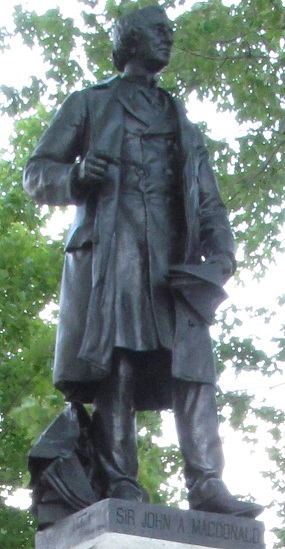
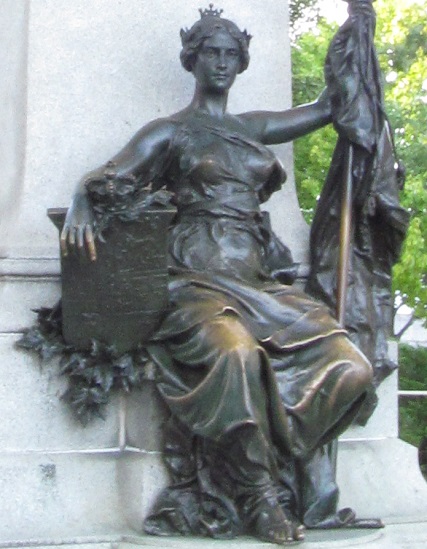
Sir John A. Macdonald, who added Manitoba, British Columbia, and Prince Edward Island, and oversaw completion of the Canadian Pacific Railway from coast to coast. He now oversees this woman.

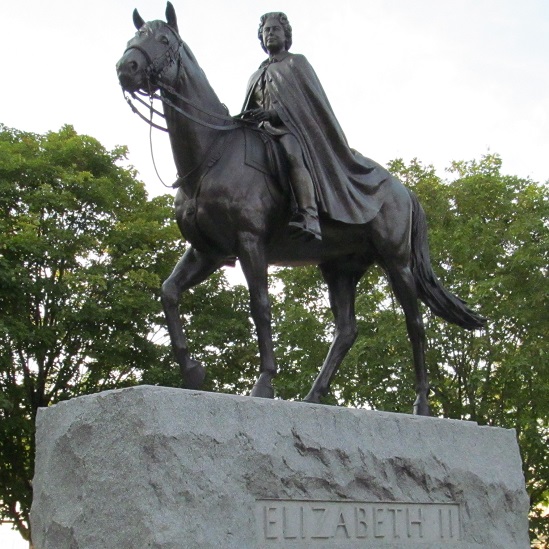
It seems like Queen Elizabeth II has been around forever, but despite statuary proximity, I don't think she was actually a contemporary of Sir John.

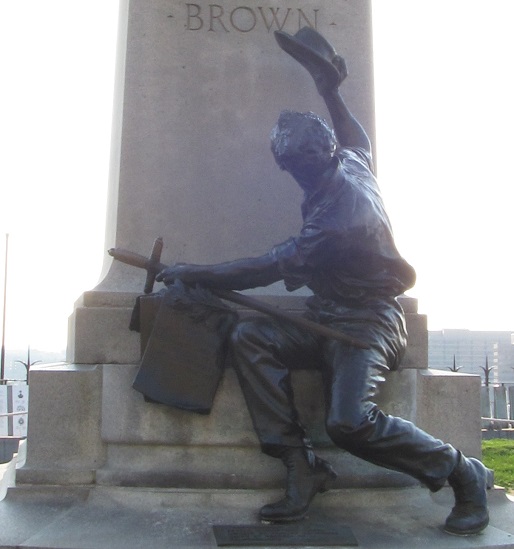
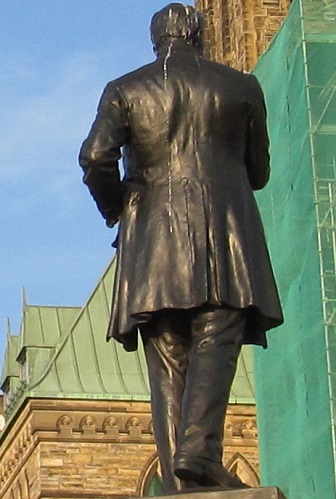
Since I now find myself at the rear of Parliament, I suppose I should photograph the rear of George Brown. Or just his statue. He was a key figure in Confederation and founder of the Globe newspaper.

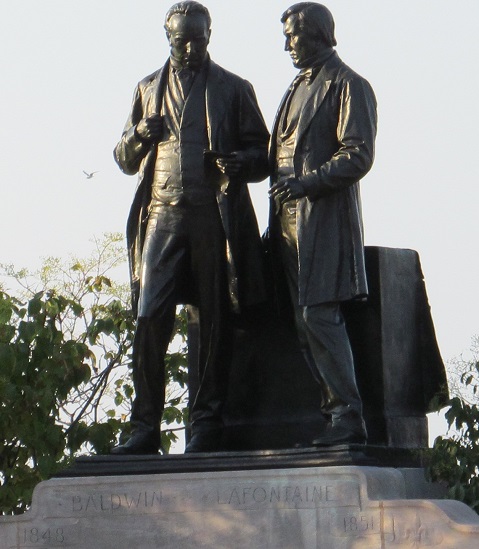
Robert Baldwin and Sir Louis-Hippolyte Lafontaine have to share a statue. Can they have been that much less important to Canada's history than, oh I don't know, QE2?

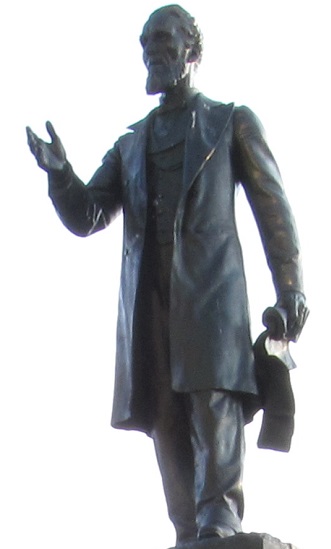
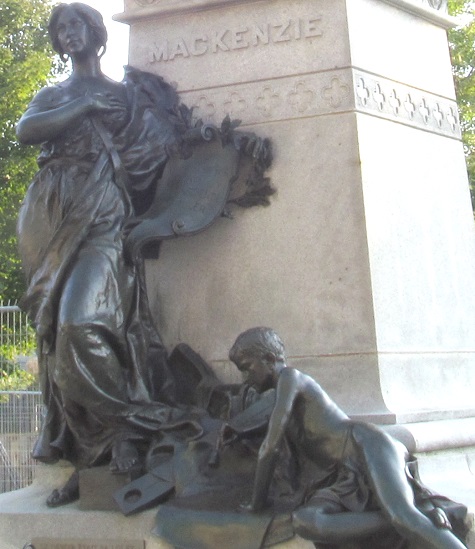
Really, why does everyone have random people below them? It's like Canada wants to show off how classist it can be. Anyway, this is one of the most Canadian names around Parliament, Alexander Mackenzie, the Prime Minister who established the Supreme Court and universal male suffrage.

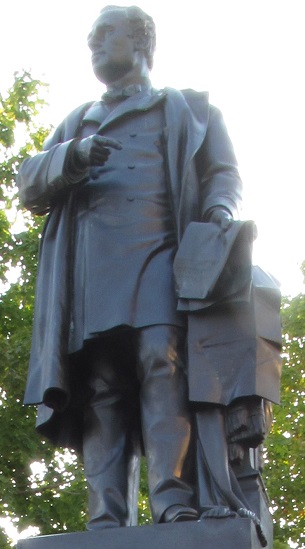
Sir George-Étienne Cartier is the only one of Louis-Philippe Hébert's four statues to not feature people below the man. I guess Cartier just wasn't that important, never mind being one of the "Founding Fathers" if Canada had such a thing. In fact, Cartier was the first monument on Parliament Hill, so maybe Hébert hadn't yet found his defining style.

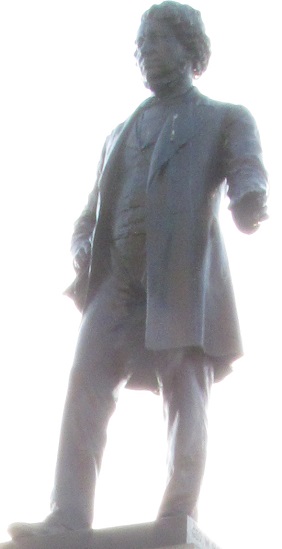
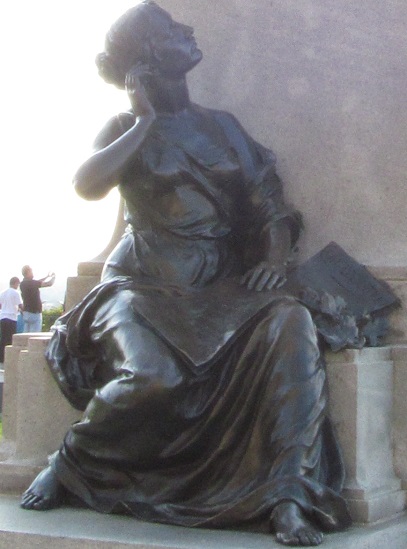
Thomas D'Arcy McGee, the only Irishman in the group, also gets to stand over a commoner despite not being sculpted by Hébert. Then again, this and George Brown were done by another Québec man, George William Hill (signed below Thomas's foot), so maybe it's just a Francophone thing.

Sir Robert Laird Borden, who died during the Art Deco era and was thus honored even though his statue came years later.


Not really a statue, but curiously on the definitive page describing Parliament Hill's sculptures, this is the 1994 Police Memorial just behind Sir Robert.


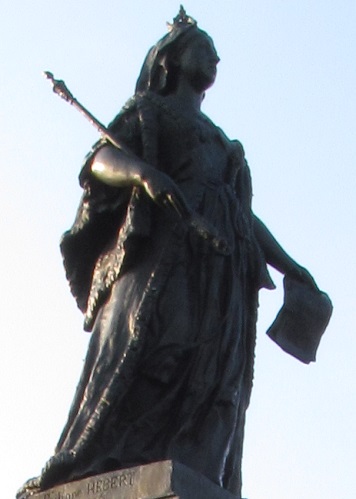
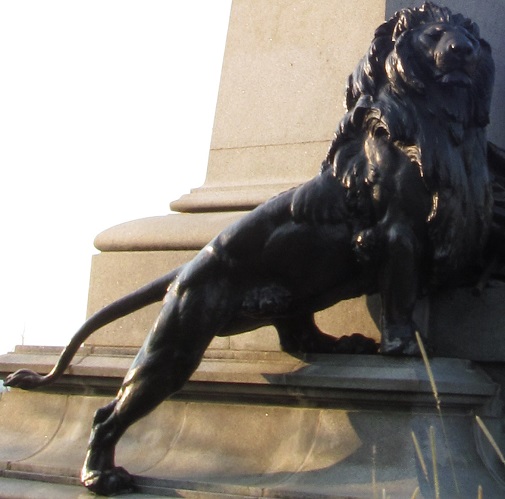
The last two statues are tucked behind the West Block of Parliament. Queen Victoria deservingly lords above her minions, who include an adoring young maiden and a lion. Yes, Victoria even told the lions what to do. Everyone fell in line under her. Not surprisingly, this is another work of Hébert.

Don't you just want to watch some TV and have a drink with Lester Bowles Pearson? He was of the modern era and so probably enjoyed just such a pastime in his later years.
See more of Ottawa's buildings
See more of Parliament
Back to Ontario Non-Roads
Back to Non-Roads main page




































